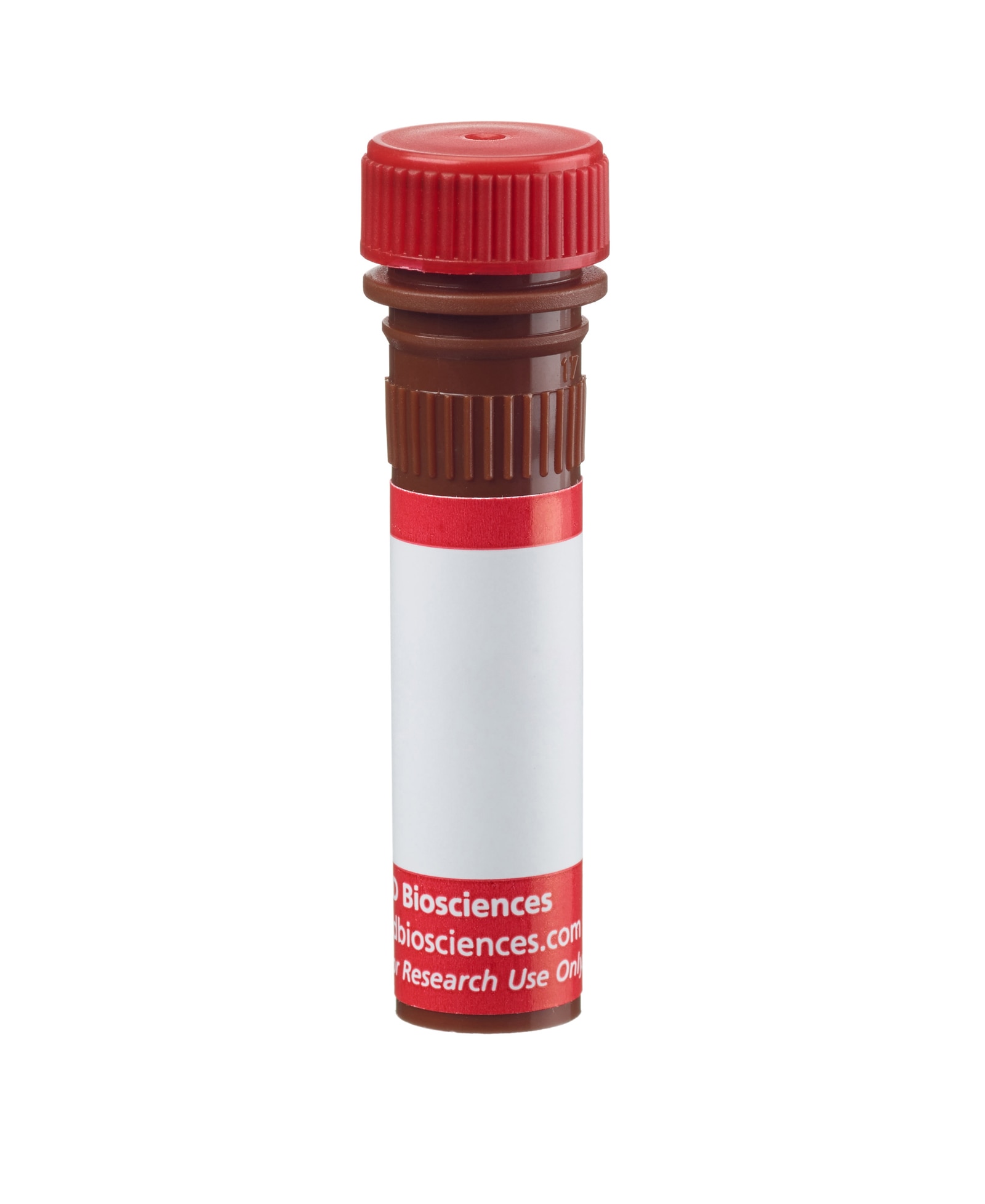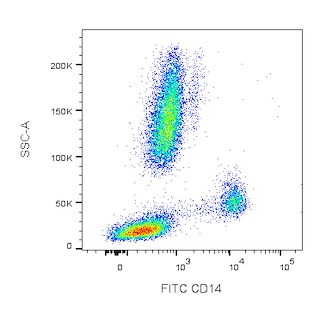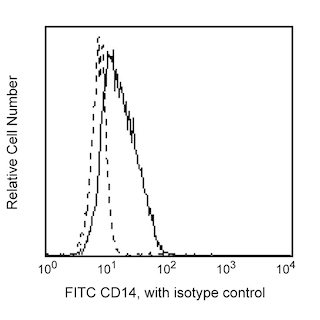Old Browser
This page has been recently translated and is available in French now.
Looks like you're visiting us from {countryName}.
Would you like to stay on the current country site or be switched to your country?




Multicolor flow cytometric analysis of Leptin Receptor (CD295) on human mononuclear cells. Human peripheral blood was treated with BD Pharm Lyse™ Lysing Buffer (Cat. No. 555899) to lyse erythrocytes. The leucocytes were washed and stained with FITC Mouse Anti-Human CD14 (Cat No. 555397/557153/561712), BD Horizon™ V450 Mouse Anti-Human CD19 (Cat No. 644491) antibodies and either Alexa Fluor® 647 Mouse IgG2b, κ Isotype Control (Cat No. 557903) or Alexa Fluor® 647 Mouse Anti-Human Leptin Receptor (CD295) antibody (Cat No. 564376). The flow cytometric dot plots show the correlated expression patterns of CD19 (Upper Panels) or CD14 (Lower Panels) versus Leptin Receptor (CD295) [or Ig Isotype control staining] for gated events with the forward and side light-scatter characteristics of viable mononuclear leucocytes. Flow cytometric analysis was performed using a BD FACSCanto™ II Flow Cytometer System.


BD Pharmingen™ Alexa Fluor® 647 Mouse Anti-Human Leptin Receptor (CD295)

Regulatory Status Legend
Any use of products other than the permitted use without the express written authorization of Becton, Dickinson and Company is strictly prohibited.
Preparation And Storage
Product Notices
- This reagent has been pre-diluted for use at the recommended Volume per Test. We typically use 1 × 10^6 cells in a 100-µl experimental sample (a test).
- An isotype control should be used at the same concentration as the antibody of interest.
- Caution: Sodium azide yields highly toxic hydrazoic acid under acidic conditions. Dilute azide compounds in running water before discarding to avoid accumulation of potentially explosive deposits in plumbing.
- Source of all serum proteins is from USDA inspected abattoirs located in the United States.
- The Alexa Fluor®, Pacific Blue™, and Cascade Blue® dye antibody conjugates in this product are sold under license from Molecular Probes, Inc. for research use only, excluding use in combination with microarrays, or as analyte specific reagents. The Alexa Fluor® dyes (except for Alexa Fluor® 430), Pacific Blue™ dye, and Cascade Blue® dye are covered by pending and issued patents.
- Alexa Fluor® is a registered trademark of Molecular Probes, Inc., Eugene, OR.
- Alexa Fluor® 647 fluorochrome emission is collected at the same instrument settings as for allophycocyanin (APC).
- For fluorochrome spectra and suitable instrument settings, please refer to our Multicolor Flow Cytometry web page at www.bdbiosciences.com/colors.
- Please refer to www.bdbiosciences.com/us/s/resources for technical protocols.
Companion Products






The 52263 monoclonal antibody specifically binds to the Leptin Receptor (Leptin R/LEPR) which is also known as CD295. CD295 is a type I transmembrane glycoprotein that belongs to the type I Cytokine Receptor family within the Immunoglobulin gene superfamily. Multiple isoforms of CD295 have been detected including a long form with a large cytoplasmic domain capable of signal transduction. Several receptor isoforms with short cytoplasmic domains that lack the capacity to transduce signals have also been reported. CD295 is widely expressed by a variety of cells within different tissues. CD295 binds to leptin with high affinity and plays important roles in lipid metabolism, fertility, angiogenesis, bone formation and immunity.
Development References (3)
-
Fantuzzi G, Faggioni R. Leptin in the regulation of immunity, inflammation, and hematopoiesis. J Leukoc Biol. 2000; 68(4):437-446. (Biology). View Reference
-
Tartaglia LA, Dembski M, Weng X, et al. Identification and expression cloning of a leptin receptor, OB-R. Cell. 1995; 83(7):1263-1271. (Biology). View Reference
-
Venken K, Seeuws S, Zabeau L, et al.. A bidirectional crosstalk between iNKT cells and adipocytes mediated by leptin modulates susceptibility for T cell mediated hepatitis. J Hepatol. 2014; 60(1):175-182. (Biology). View Reference
Please refer to Support Documents for Quality Certificates
Global - Refer to manufacturer's instructions for use and related User Manuals and Technical data sheets before using this products as described
Comparisons, where applicable, are made against older BD Technology, manual methods or are general performance claims. Comparisons are not made against non-BD technologies, unless otherwise noted.
For Research Use Only. Not for use in diagnostic or therapeutic procedures.
Report a Site Issue
This form is intended to help us improve our website experience. For other support, please visit our Contact Us page.